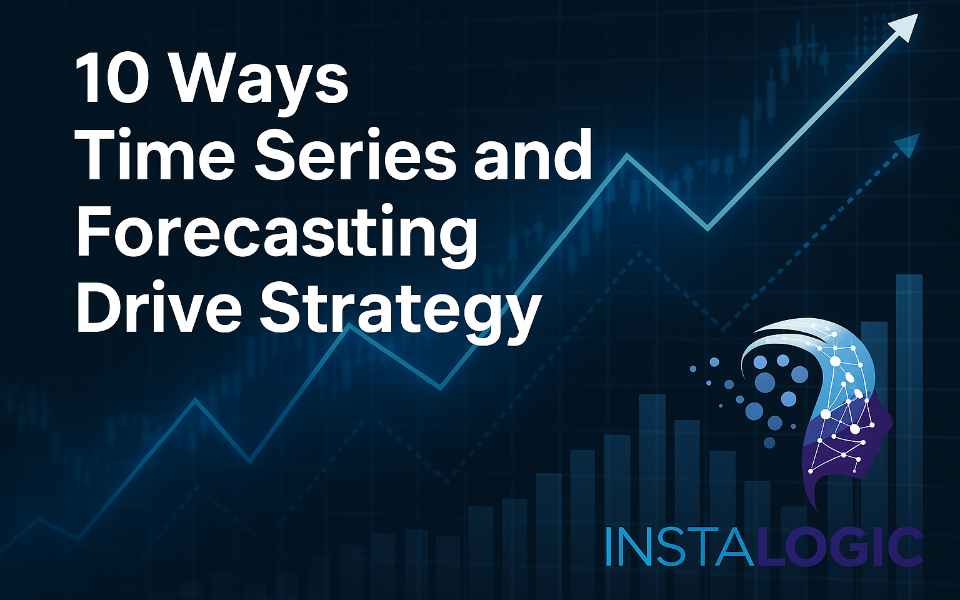The Event and the Big Questions
NASSCOM’s Sales and marketing Interest Group (SIG) conducted an event at the Sheraton Hotel in Gachibowli, Hyderabad in June. Social Media Marketing (henceforth, SMM) was the core theme and the big question discussed was the ‘ABC of social media’, with ABC mapping neatly onto Awareness -> Branding -> Conversion. It’s a pertinent and timely question too.
After all, first, how much of the current hype surrounding social media marketing is reflected at ground level in pure ‘awareness’ metrics among businesses (& MSMEs especially among them) that could benefit most from the phenomenon? Second, how much of the buzz translates into practical advice on ‘branding’ – a euphemism for process-driven consistency in engaging the external environment among this target audience, especially in a country like India? Third, how much of such actually converts into measurable outcomes and performance metrics we actually care about – such as leads, lead conversions, sales, repeat business opportunities, etc.?
In his excellent keynote address, Position-Square’s Vinod Nambiar starts off with a basic question: Do we need really social? However, academic that I am, I dig a tad deeper and initialize the discussion with a question even more basic: What is ‘social’ anyway? It might help to define it for our purposes given that we use this term a lot often with only an implicit understanding of its connotations.
Definitional Preliminaries
Imagine communication between two people via a phone call or email. This communication (or, ‘interaction’) is private and not social simply because nobody outside the two parties involved are privy to the discussion. However, if several people are copied onto the same email, it becomes quasi-social simply because a number of people are now privy to the communication even as bystanders (for the time being, say). Now, imagine an email conversation between a dozen+ people and everyone is doing a ‘reply all’ in each instance. This sort of communication would qualify as much more social than merely copying folks because now a large number of people have been made party to the communication. Now stretch things further and imagine people putting up communications on a notice board visible to the world at large and upon which people could post reactions, responses, comments etc. – and we have the beginnings of a truly social milieu.
Thus a social platform is any platform that allows third parties access to communications and (likely) facility to react to or otherwise affect the communication. Thus social invokes multifaceted consideration of bystanders, onlookers and potential responders to any communication put out there. It involves some degree of social ‘performance’ by our social ‘personas’. No wonder then that WhatsApp groups and Facebook pages, Twitter and LinkedIn are all social platforms by nature and acquire enhanced social functionality by design.
To answer Vinod’s original question, Do we need Social?, a good place to start would be to first get some estimate of the size (and thereafter potential impact) of the audience we are talking about on social platforms these days. Harking back to the famous six-degrees-of-separation experiment in the US decades ago that posited (and demonstrated in a snail-mail world) that any two individuals in the world are likely to at most be separated by six social steps between them (i.e., six people connections), Vinod points out latest research by Facebook that, using its billions strong database of social networks and connections, finds that there’s only 3.57 steps or hops on average between any 2 FB members out of over 2 billion unique monthly users. The numbers from research in LinkedIn point to something similar. Now think of the potential reach that social media platform afford to marketers of all manner of firms, geographies and sectors in today’s digital age. The point is ridiculously large budgets are no longer the only means to reach people in their millions anymore. There are ways that improve the odds of reaching large numbers of relevant targets using SMM. In what follows, we explore the steps one can follow to do so.
The SMM Game-plan
The game-plan for the ABC of SMM can be succinctly summarized in the following 11 steps (to paraphrase Vinod).
Step 1: Research and basic ideation using industry trends, buyer insights etc.
Step 1 is always basic and common to all Sales and marketing, whether on SMM or off it. It concerns where one’s business efforts in sales and marketing *should* be. Think of questiosn such as Are my current clients in growing or slowing industries? Which industries out there are growing the fastest and will gain most from my offerings? Without getting this critical piece right – of where one should focus the gunscope on – the rest of what follows may not even matter.
Step 2: Build Customer Personas (for Social Media).
Step 2 builds on step 1 and refines the customer characteristics that emerge. Step 2 recommends one build customer personae – profiles of ideal customers using demographics, online, social and behavioral data. The point is to pinpoint or make amenable to pattern-recognition, influencers & decision-makers. Here, often a ‘doppleganger‘ approach works best. Scan your known clientele, and select ideal (i.e., profitable, long-term, win-win) customers. Then, for these customers, build social profiles (and not just firmographic ones). Thus for instance, among our top customers’ social profiles, an interest in automation technology/CRM solutions/cloud solutions/etc. stands out. Now do a search for matching profiles among the wider population of prospects and targets to identify dopplegangers out there whose needs may correlate to those already in our clientele database (more of how to assess and reach these coming up below).
Step 3: Define own product/Service.
A simple step, often underestimated and underappreciated. And while this looks simple, looks can be deceiving. To quote an old army saying The important things are always simple. The simple things are seldom easy. The reason this maybe harder than it looks is that it requires taking a prospect’s viewpoint of what the product/service (henceforth, offering) does or will do for the customer. It entails fashioning a compelling value proposition that resonates with the client. Yup, not easy. But very rewarding if pulled off successfully.
Step 4: Content mapping.
This effectively means mapping the audience to our messaging. It follows logically from the previous steps because ideally by now, target verticals and sub-verticals have been identified (in step 1), ideal customer personas online have been built (in step 2), and what value proposition for own offering may best resonate with such a persona has been identified (in step 3). Now, what follows, logically, is now mapping the best resonating content (i.e., message) to that identified target audience.
Step 5: Laser targeting.
This step builds up from Step 2. It promotes the use of account based Marketing (ABM) following lookalike audience targeting. In classical Marketing theory (and here again, I have my academic hat on), the three critical; steps Segmentation, Targeting and Positioning (S-T-P) form a powerful troika. These three don’t necessarily operate in sequence but could be iteratively done. Segmentation partitions the universe of prospect possibilities into ‘segments’ of customers who are relatively homogeneous in their needs and distinct from those in other segments. Positioning is the art of assessing where in customers’ perceptions our firm, brand or offerings are relative to competition. It thus locates or positions our firm vis-a-vis others in perceptual space. Now in B2C Marketing, Perception is reality to a large, self-fulfilling extent. Even B2B marketing isn’t so immune given the huge stakes involved. Positioning helps firms figure out how best and on what attribute dimensions they are perceived as different by a target segment. It further wades into how best to leverage the same in product design and Marketing.
Finally, Targeting, following segmentation and Positioning then picks on the classical 4Ps of Marketing (Product, Price, Promotion and Place or Channel) to design offerings which will resonate with the targeted segments.
At this stage, much of the conceptual heavy lifting is done. The steps above, well executed bring a lot of clarity to the tactical steps that follow below.
Step 6: Channel Mix strategy
This step asks and answers the question – how best to reach prospects. Should we go offline, online, both? At what cost? To what potential gain? Given the vast diversity in firms and needs out there, this step as also what follows is very contextual and firm-specific.
Step 7: Communicate and Connect.
Having figured out the target segment (step 5), its social persona (step 2) and the channel mix strategy (step 6), time to rejig step 4 and inject content mapping from there into creatives & ad types to get right messages out to the right people. Remember, if the previous steps aren’t well thought out and executed, then this step will also likely falter.
Step 8: Landing page
A customized set of landing pages for different audience segments & Marketing messages is a logical follow-through. A different landing page for a campaign that promises price gains versus that promising reliability and security, for instance.
Step 9: Reporting & Analysis
Normally thought of as staid, this step has a game changer in its pocket. The ability to rapidly, scale-ably conduct A/B tests, other tests to learn in real time customer preferences, responses and mindsets is crucial in today’s world. The best firms in the world do pilots before full scale rollout, tweak features and parameters with successive rounds of testing and measure outcomes against KPIs.
Step 10: Optimization – Time now to fine tune the campaign on an ongoing basis. Change campaign elements on the fly as data pours in. This then is the optimization of the campaign.
Step 11: Remarketing – Finally, given all the ten steps above, the opportunity is now afforded to personalize experiences, to retarget audiences via different platforms.
In summary, SMM is not some nebulous entity. Rather, it is one that very much lends itself to understanding, analysis, careful planning and implementation.
About the Author:
Sudhir Voleti is an Assistant Professor of Marketing and ISB Research Fellow at the Indian School of Business (ISB), Hyderabad. He currently also serves on the core team of NASSCOM’s Special Interest Group (SIG) in Sales and Marketing.


























Comment
Excellent blog! thank you for sharing. bookmarked!